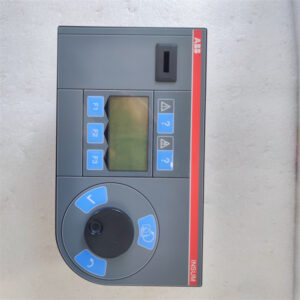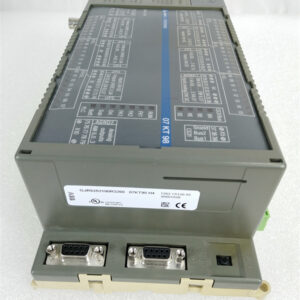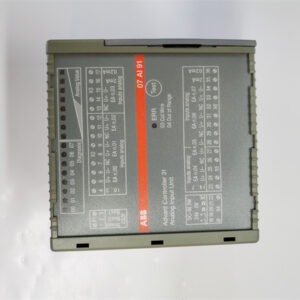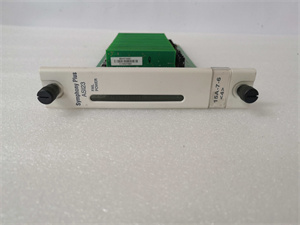Description
| Parameter name | Parameter value |
| Product model | PM633 |
| Manufacturer | ABB |
| Product category | Programmable Logic Controller (PLC) module |
| Processing power | Equipped with a high – performance processor capable of handling complex control algorithms and large amounts of data. It can execute ladder logic, function block diagrams, and structured text programming languages with high speed and efficiency. For example, it can process thousands of input and output operations per second, ensuring rapid response to changes in industrial processes. |
| Memory capacity | Features a substantial amount of user – programmable memory, which can store programs, data, and configuration settings. The memory is designed to be non – volatile, meaning that data is retained even during power outages. This allows for seamless continuation of operations once power is restored. The PM633 may have, for instance, several megabytes of program memory and data memory to meet the demands of various industrial applications. |
| I/O connectivity | Supports a wide range of input / output (I/O) modules, allowing for easy connection to sensors, actuators, and other field devices. It can interface with digital inputs (such as push buttons, limit switches) and digital outputs (relays, solenoids), as well as analog inputs (temperature sensors, pressure transducers) and analog outputs (variable – speed drives, control valves). The number of I/O points that can be connected depends on the specific configuration, but it can typically support hundreds of I/O channels, enabling comprehensive control over industrial processes. |
| Communication capabilities | Integrates multiple communication interfaces, including Ethernet, Modbus, and CANopen. Ethernet enables high – speed data transfer, making it suitable for connecting to enterprise networks, HMIs (Human – Machine Interfaces), and other PLCs for seamless integration within a large – scale industrial automation system. The Modbus protocol allows for communication with a vast number of industrial devices that support this standard, facilitating interoperability. CANopen is useful for connecting to devices in a real – time, distributed control environment, such as in automotive manufacturing or industrial robotics applications. |
| Expansion options | Offers expansion slots or bays, enabling the addition of additional functionality. Users can insert modules for functions like advanced motion control, high – speed counting, or special – purpose communication protocols. This expandability makes the PM633 adaptable to evolving industrial requirements, allowing for system upgrades without the need to replace the entire PLC. |
| Power supply | Operates on a standard industrial power supply, typically 24V DC or 110 – 230V AC. The power supply is designed to be stable and efficient, ensuring continuous operation under normal industrial conditions. It may also have built – in over – voltage, under – voltage, and short – circuit protection to safeguard the module from electrical faults. |
| Operating temperature range | Can function within a wide temperature range, usually from – 20 °C to +60 °C. This makes it suitable for use in various industrial settings, including those with extreme temperatures, such as cold storage facilities or hot manufacturing plants. The module is also designed to withstand humidity, vibration, and electromagnetic interference commonly found in industrial environments, ensuring reliable operation. |
| Dimensions (approximate) | Has dimensions optimized for installation in standard industrial control panels. Its compact size allows for space – efficient integration into existing systems. The dimensions might be [X] mm (Width) x [Y] mm (Height) x [Z] mm (Depth), which can vary depending on the specific model and its features. |
| Weight | Weighs approximately [W] kg, which is light enough for easy handling during installation and maintenance, while still being robust enough to withstand the rigors of industrial use. |
| Protection class | Features a protection class such as IP20 or higher, protecting against dust and accidental contact. In more demanding environments, models with higher protection classes like IP54 or IP65 may be available, providing enhanced protection against water and dust ingress. |
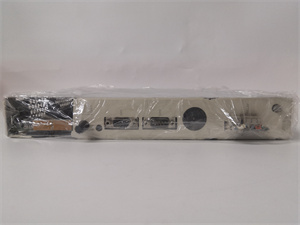
ABB PM633
Product introduction
The ABB PM633 is a powerful and versatile Programmable Logic Controller (PLC) module, designed to be a core component in industrial automation systems. As part of ABB’s comprehensive portfolio of industrial control products, the PM633 combines advanced technology with robust construction to meet the high – performance demands of modern industrial environments.
This module is engineered to execute complex control tasks with precision and speed. By supporting multiple programming languages, such as ladder logic, function block diagrams, and structured text, it caters to the programming preferences of different engineers and technicians. In an industrial setting, this flexibility in programming allows for the implementation of intricate control strategies. For example, in a manufacturing plant, the PM633 can be programmed to control the operation of an entire production line, ensuring that each machine operates in harmony to produce high – quality products efficiently.
Core advantages and technical highlights
High – performance processing
The PM633 is equipped with a high – performance processor that can handle complex control algorithms and process large amounts of data rapidly. In a petrochemical plant, for instance, it needs to monitor and control numerous variables such as temperature, pressure, and flow rates in real – time. The PM633’s powerful processor enables it to analyze this data and make quick decisions, adjusting the operation of pumps, valves, and other equipment to maintain optimal process conditions. This high – speed processing not only improves the efficiency of the production process but also enhances product quality and reduces waste.
Ample memory capacity
With a substantial amount of user – programmable memory, the PM633 can store extensive programs, data, and configuration settings. In a large – scale logistics warehouse, where there are multiple automated guided vehicles (AGVs), conveyor belts, and storage systems to control, the PM633’s memory can store the complex control programs for each device, as well as the data related to inventory management and order fulfillment. The non – volatile nature of the memory ensures that all this crucial information is retained even during power outages, preventing any loss of data and enabling a smooth restart of operations.
Diverse I/O connectivity
The ability to connect to a wide range of I/O modules is a significant advantage of the PM633. In a power generation facility, it can interface with a variety of sensors and actuators. Digital inputs from sensors that detect the status of circuit breakers or the position of valves can be easily connected to the PM633. Analog inputs from sensors measuring the temperature of generators or the voltage of power lines can also be integrated. On the output side, it can control digital outputs to operate relays that switch electrical circuits and analog outputs to adjust the speed of cooling fans or the output of power inverters. This diverse I/O connectivity allows for comprehensive control over all aspects of the power generation process.
Advanced communication capabilities
The multiple communication interfaces of the PM633, including Ethernet, Modbus, and CANopen, enable seamless integration within industrial networks. In a smart factory environment, Ethernet connectivity allows the PM633 to communicate with higher – level enterprise systems, such as manufacturing execution systems (MES) and enterprise resource planning (ERP) systems. This enables real – time data sharing between the shop floor and the management level, facilitating better decision – making. Modbus communication is useful for connecting to legacy industrial devices, ensuring compatibility and interoperability in mixed – technology environments. CANopen is beneficial in applications where real – time communication is critical, like in robotic assembly lines, where precise coordination between multiple robotic arms is required.
Expandability
The expansion options of the PM633 make it highly adaptable to changing industrial requirements. In a food and beverage production line that undergoes an upgrade to add new packaging machinery or advanced quality control systems, additional modules can be inserted into the expansion slots of the PM633. These modules can provide functions such as high – speed counting of product units, advanced motion control for the new packaging equipment, or specialized communication protocols for connecting to the new quality control sensors. This expandability ensures that the PLC system can grow and evolve with the business, reducing the need for costly system replacements.
Typical application scenarios
Manufacturing industry
In an electronics manufacturing plant, the PM633 can be used to control the entire surface – mount technology (SMT) production line. It can receive input signals from sensors that detect the presence of circuit boards, the correct placement of components, and the temperature of soldering stations. Based on this data, it can control the operation of pick – and – place machines, soldering robots, and conveyor belts. The PM633 can also communicate with the factory’s quality control system via Ethernet, sending data on production yields and defect rates for analysis and process improvement.
Power generation
At a hydroelectric power plant, the PM633 can be used to control the operation of turbines, generators, and associated equipment. It can receive data from sensors measuring water flow rate, pressure, and turbine speed. Using this information, it can adjust the opening and closing of valves to control the water flow to the turbines, optimize the generator’s output voltage and frequency, and monitor the performance of auxiliary systems such as cooling water pumps and lubrication systems. The PM633 can also communicate with other power plants in the grid via Modbus to coordinate power generation and distribution.
Logistics and warehousing
In a large – scale automated warehouse, the PM633 can control the operation of automated guided vehicles (AGVs), conveyor belts, and storage and retrieval systems. It can receive commands from the warehouse management system (WMS) via Ethernet, telling the AGVs where to pick up and deliver goods. It can also monitor the status of conveyor belts, ensuring that they are running smoothly and that goods are being transported to the correct locations. The PM633 can interface with sensors that detect the presence of goods in storage bins and control the operation of the storage and retrieval machines to ensure efficient inventory management.
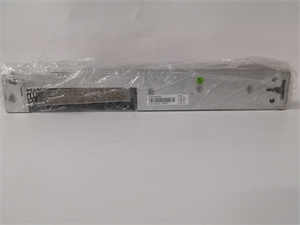
ABB PM633
Related model recommendations
PM620: A more basic model from ABB, which may have a lower processing power and less memory capacity compared to the PM633. It could be suitable for smaller – scale industrial applications where the control tasks are relatively simple and the amount of data to be processed is limited. For example, in a small – scale workshop that only needs to control a few machines and has a basic level of automation requirements, the PM620 can provide a cost – effective solution.
PM650: This model may offer enhanced features, such as higher processing speeds, more extensive memory, and additional communication interfaces. It could be used in more complex industrial systems, such as those found in large – scale chemical plants or automotive manufacturing plants. In these environments, where there are a large number of devices to control, a high volume of data to process, and complex communication requirements, the PM650 may better meet the demands.
PM635: A variant of the PM633 with possible hardware or software modifications. It might have different expansion options or a slightly different form factor, making it suitable for specific industrial applications where the standard PM633 does not fit. For instance, in applications where space is extremely limited, the PM635 with a more compact design could be a better choice.
Installation, commissioning and maintenance instructions
Installation preparation
Before installation, ensure that the installation area is clean, dry, and free from excessive dust and moisture. The area should also be well – ventilated to prevent overheating of the module. Mount the PM633 in a location that is easily accessible for maintenance and monitoring. Use appropriate mounting brackets (compatible with its dimensions) to securely attach it to a control panel or a rack. Connect the power supply, making sure to observe the correct voltage and polarity. When connecting to other devices via its communication interfaces, use high – quality shielded cables to minimize electromagnetic interference.
Maintenance suggestions
Regularly check the connection cables for any signs of damage or looseness. Inspect the module for overheating, which can be indicated by a rise in temperature or abnormal operation. Clean the module periodically to remove dust, especially if it is installed in a dusty environment. In case of software – related issues, such as incorrect control commands or communication problems, check for available software updates from ABB. If a hardware failure occurs, such as a malfunctioning I/O interface or a damaged communication port, contact ABB’s technical support or use genuine ABB replacement parts for repair.
Service and guarantee commitment
ABB offers a comprehensive service and guarantee for the PM633. The product comes with a standard one – year warranty against manufacturing defects. ABB’s global technical support team is available to assist customers with installation, commissioning, and any technical issues that may arise during the product’s lifespan. Customers can access online resources, including user manuals, software updates, and troubleshooting guides, through ABB’s official website. In case of major issues, ABB can provide on – site support to minimize downtime. This commitment reflects ABB’s confidence in the quality and reliability of the PM633 and its dedication to ensuring customer satisfaction in industrial automation applications.
Full 12-month warranty on all components
Dedicated after-sales support
Same-day dispatch on 1000s of parts
All units are fully tested
- 1. Email confirmation
You will get an email confirming that we have received your enquiry. - 2. Dedicated Account Manager
One of our team will be in touch to confirm your part(s) specification and condition. - 3. Your quote
You will receive a comprehensive quote tailored to your specific needs.
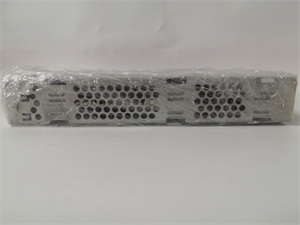
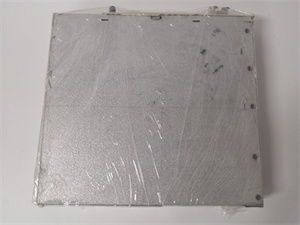
 Full 12-month warranty
Full 12-month warranty Available for dispatch immediately
Available for dispatch immediately We deliver worldwide
We deliver worldwide Full 12-month warranty on all components
Full 12-month warranty on all components